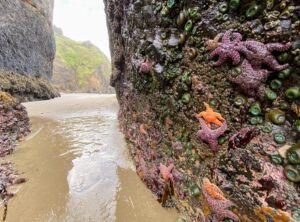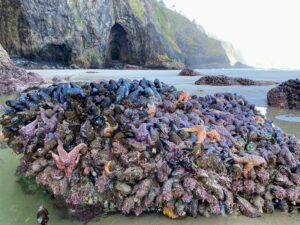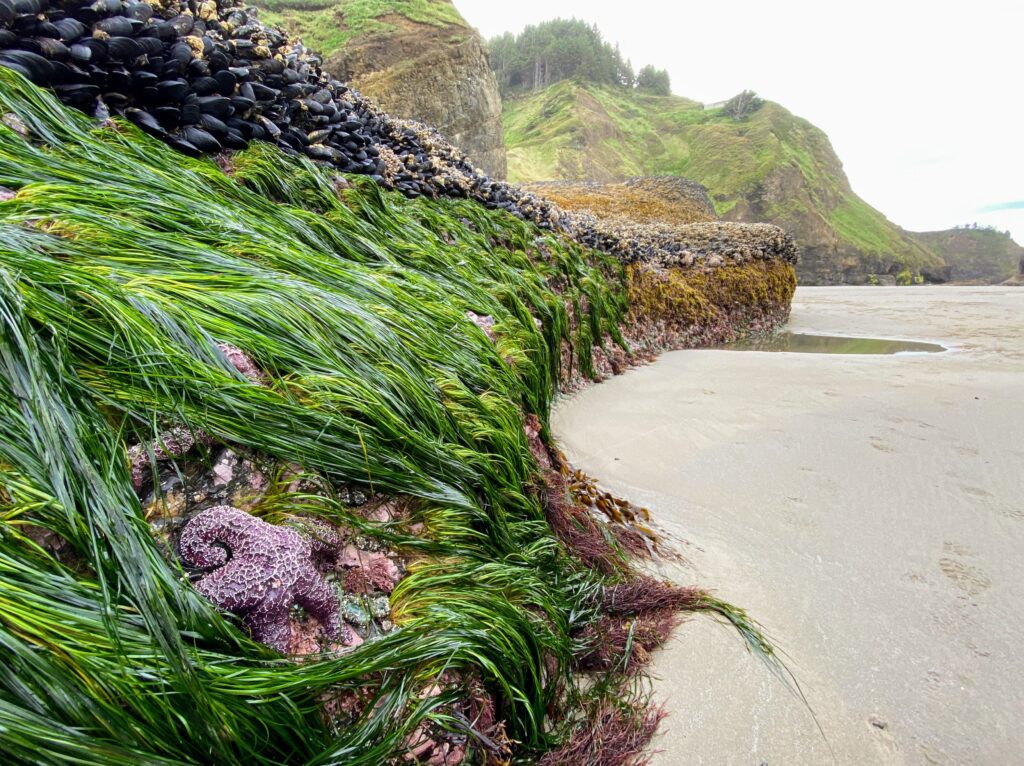Tillamook Coast Life Blog
Oregon Coast Tide Pool Etiquette
Experience Oregon Coast tide pools armed with the knowledge to make the outing safer, with less impact, and more fun.
The tide pools found along the Oregon Coast tangibly display the unique natural beauty of the landscape, as well as the abundant and fascinating fauna that call that terrain home. When tides are low and conditions are right, visitors can expect to be inundated with textures, shapes, and colors of sea life that seem almost otherworldly. In a way, they are.
 The coast is hardly a controlled environment, however. So knowing how to safely and sustainably engage in such a sensory-enlivening experience is key. With that in mind, I asked Ali Berman, the Communications and Marketing Director of the Bird Alliance of Oregon for a list of pointers and guidelines for exploring Oregon Coast tide pools. Here’s what she had to say.
The coast is hardly a controlled environment, however. So knowing how to safely and sustainably engage in such a sensory-enlivening experience is key. With that in mind, I asked Ali Berman, the Communications and Marketing Director of the Bird Alliance of Oregon for a list of pointers and guidelines for exploring Oregon Coast tide pools. Here’s what she had to say.
“During a single low tide billions of animals that were in the water moments ago become exposed and wait for the tide to come back in. It’s one of the most vulnerable times for many intertidal animals. Many species, like anemones or sea stars, are either slow or stationary and become exposed to dangers like predators and people.
To help ensure our rocky habitat stays pristine, there are a few rules of tidepool etiquette to live by that will help ensure we treat our intertidal neighbors with the respect and care they deserve. After all, it’s their home. We’re just visitors.
-
Look but don’t touch. For some hard-shelled animals like mussels and barnacles, a light touch isn’t going to be a problem. But sea stars, anemones, nudibranchs (sea slugs), and other soft or mobile animals should be observed but not touched. They can easily be hurt, or dislodged from a location that’s keeping them safe.

Some animals, like the sunflower sea star, are just beginning to come back after being decimated by sea star wasting syndrome. We want to make sure we leave them alone and don’t cause added stress. The good news is, it’s easy to photograph these animals since they move slowly, so you can interact by getting a great photo.
- Leave your dog at home or keep them on leash. Many dogs love the beach and enjoy exploring, jumping on rocks, and splashing through the water. But dogs can do a lot of damage to animals in the tidepools. They can also frighten surrounding nesting birds, since many birds also use rocky habitat to nest and raise their young. Best to leave them at home during low tide.
- Stay on the sand (or bare rocks). Staying on the sand or bare rock is a must when tidepooling so you don’t step on living animals. But be aware, some rocks that look bare are not. Aggregate anemones can blend into the rock and coat the entire thing, so be sure that rock is truly bare before you take a step. Some folks think that barnacles are hardy enough to withstand being stepped on, but they can be crushed or injured, and they don’t have the option to escape.
- Don’t take or collect. See a pretty shell? That might just be a hermit crab’s next home. Even aggregate anemones cover themselves in shell pieces as a form of protection. There is a lot of natural recycling that takes place in the tidepools, so take only memories with you and leave the animals, plants, and shells where they are. Note: It’s also illegal to collect in many intertidal areas along the coast so if you are going out looking for mussels, make sure the place you choose allows harvesting.
- Keep your distance from birds and mammals. Many intertidal animals aren’t going to notice you, but birds and marine mammals will be disturbed by your presence. So keep your distance so as not to disturb nesting birds, or seals that are resting on the rocks.
- Take any trash with you and if you see trash, you can help by packing it out. Every time we visit our rocky shores we can make sure to take our trash with us, and as a bonus and gift to the ocean, we can also grab other trash we may see on the beach. If no one is looking you can even whisper a little ‘you’re welcome’ as you do and pat yourself on the back for being a good wildlife steward.”


